Roku's $50 Streaming Stick makes 1080p set-top boxes obsolete
There's a ton of power in this tiny gadget.
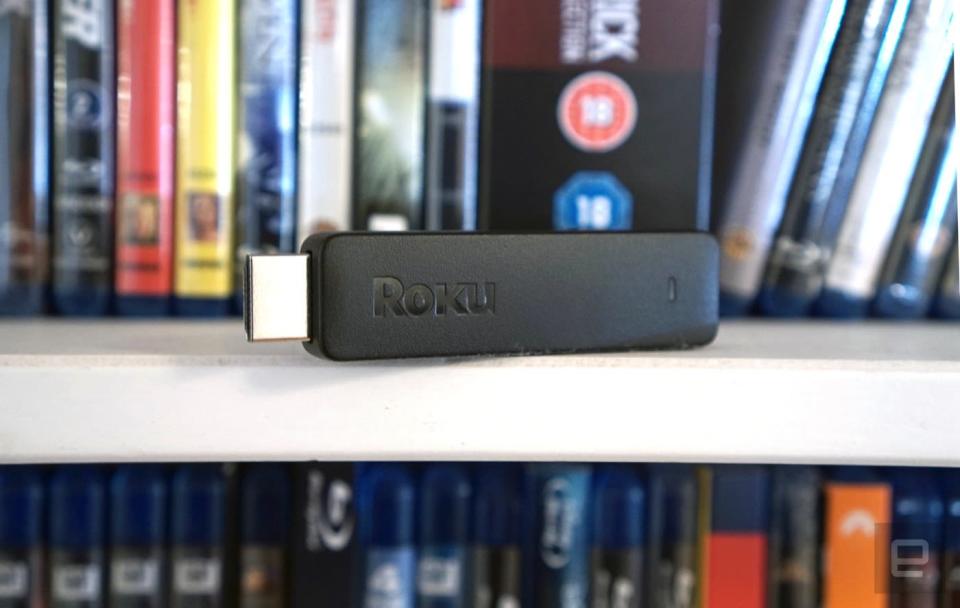
Roku has seemingly done the impossible with its latest Streaming Stick. It's smaller than the previous 2014-era version, it packs in a faster quad-core CPU and it's still just $50. The speed improvements, in particular, are a welcome change because the last Streaming Stick sometimes stalled when doing simple things like browsing menus. With performance like this, the only reason you'd choose a clunky set-top box over the Streaming Stick is if you needed 4K support (it's stuck at 1080p for now).
Hardware
We're at the point where capable HDMI sticks are practically indistinguishable from USB flash drives. The revamped Roku Stick is significantly slimmer than its predecessor, with a more streamlined design. You could easily fit it in your jeans' coin pocket and forget about it. (Pro tip: Don't do that.) It's almost a dead ringer for Amazon's Fire TV stick; both are rectangular slabs with near-identical dimensions, but the Roku is an almost imperceptible two-tenths of an inch shorter and 0.3 ounces lighter.
While the company wouldn't divulge full technical specs, Roku says the new stick's quad-core CPU is eight times faster than the previous version. The company wouldn't say if it upgraded the amount of RAM or storage, though. Reps tell me Roku also worked hard to improve the Stick's antenna placement, which should lead to better reception. While it's still stuck with 802.11n WiFi, it also works with 5GHz networks, which don't have as much wireless interference to deal with.

Despite the faster hardware, the Roku Stick still only supports a maximum resolution of 1080p. That might seem like an oversight now that 4K sets are readily affordable, but there are still plenty of HDTVs that could benefit from the Stick. It's ideal for houses with multiple televisions, and it's also portable enough to move around your house or travel with easily. And let's not forget that the latest Apple TV is also limited to 1080p.
Aside from its HDMI connector and a small reset button, the only other distinguishing feature on the Roku Stick is its mini-USB power port. The company recommends that you plug it into the included AC adapter, but the Stick worked just fine when connected to the USB ports on my TV and receiver. That's ideal for any streaming stick because you don't have to run a long USB cable to your wall. Future HDMI standards should be able to drive enough power to make extra power supplies unnecessary, but for now, this is as streamlined as you can get.
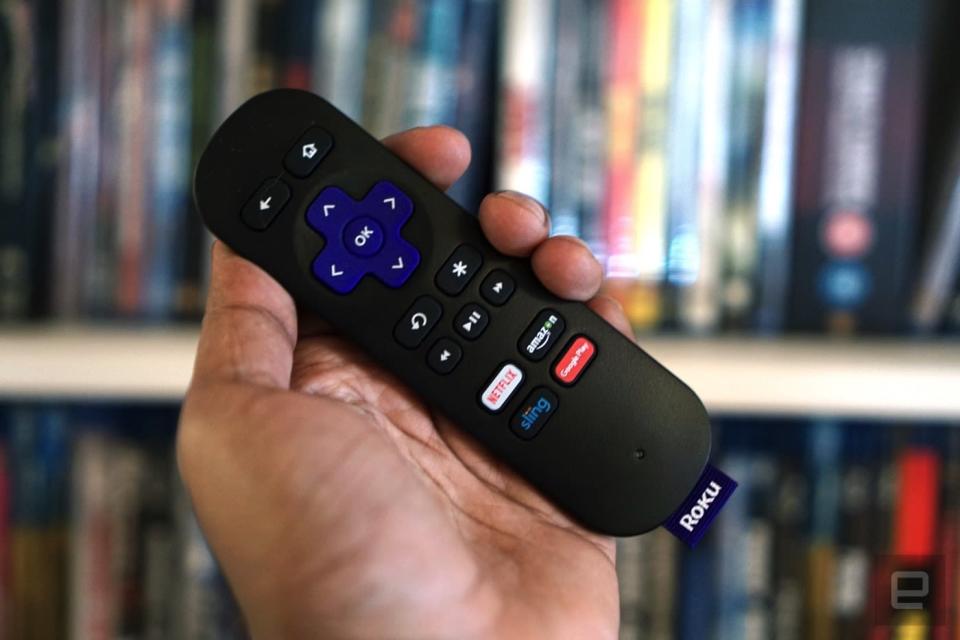
Roku also revamped its iconic remote control for the new Stick. It's sleeker and thinner than previous models, which could best be described as comfortable but chubby, and it has a matte finish instead of a glossy look. It's nowhere near as thin as the new Apple TV remote, or even the Fire TV Stick's, but you probably won't lose it as easily in your couch. It also feels good in your hand; the curve common to Roku's remotes works even better with a thinner model.
One truly useful tweak: The "OK" button is now in the center of the directional pad, instead of awkwardly sitting below it. There are still Netflix, Amazon and Sling shortcut buttons on the bottom of the remote, but the now-defunct Rdio button has been replaced by Google Play.
Unfortunately, there's still no headphone jack on this new remote, something Roku popularized with its set-top boxes. But that's where its apps come in ...
Software

More so than its other players, the new Stick gives you plenty of good reasons to rely on Roku's iOS and Android apps. For one, it's the company's first device to bring "private listening" with your headphones to its apps. While it would have been nice to have an integrated headphone jack on the remote, going the app route makes more sense because you won't be draining batteries as quickly. I also wouldn't be surprised if private listening made its way to other Roku boxes soon, as it's something the company's fans have been clamoring for.
Beyond that feature, the mobile app hasn't changed much since I looked at the Roku 4. It still gives you full control over the Roku Stick (which is especially useful for typing in usernames and passwords), text and voice search, as well as the ability to add movies and TV shows (a new addition) to your feed. The latter feature lets you know where you can stream titles once they become available. Additionally, you can also send photos, music and video from your phone to the Stick, as well as browse and add new streaming apps.
Unfortunately, Roku still hasn't made any major improvements to the operating system that powers the Stick. It's still a basic purple interface that relies on fairly simplistic menus. There's none of the visual flair that you can find in the new Apple TV, or even some smart TV implementations, like LG's WebOS. Then again, some might find that preferable because there's less UI gunk to slow down the experience.
In use
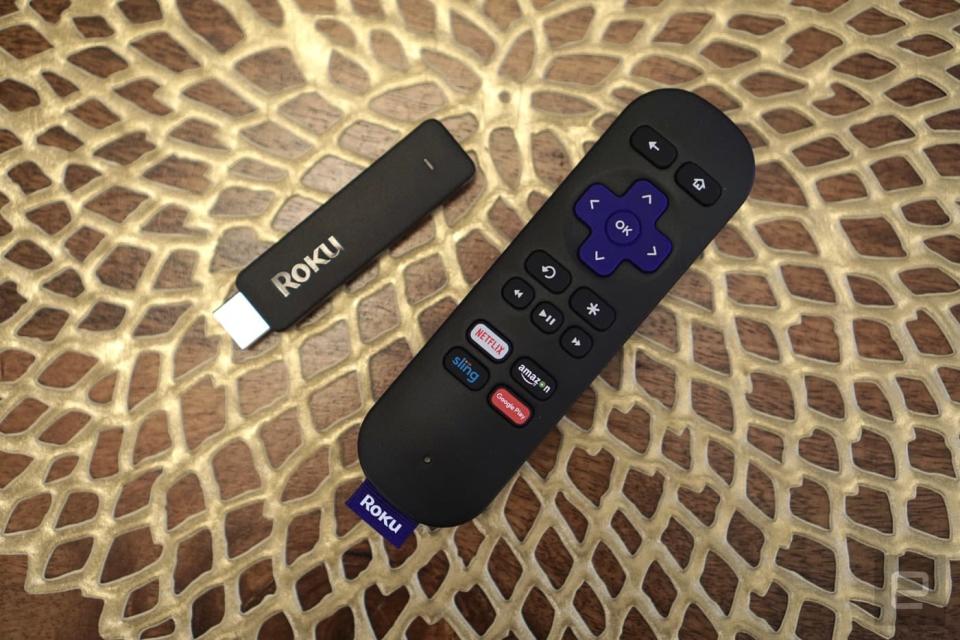
Setting up the Roku Stick was a cinch: I just plugged it into an HDMI port and connected the power cable to USB port on my TV. It booted up in a few seconds and paired the remote without issue. The rest of the process is standard for all Roku devices: I added it to my WiFi network and plugged in my Roku account details, and it proceeded to download all of the channels I set up on my Roku 3. All in all, setup took around five minutes.
It didn't take long for me to notice just how much faster this Roku Stick is. Moving around its menus felt incredibly zippy; I didn't notice any difference from navigating the beefier Roku 4 set-top box. And it also managed to load just about any video I threw at it, be it a short trailer or a long Netflix film, in under a second. There was none of the frustration I had with the last-gen Stick, which often hiccupped when trying to just browse menus. After bingeing on Archer, Girls and The Americans, I quickly forgot I was streaming video off a tiny device powered by a mere USB cable.
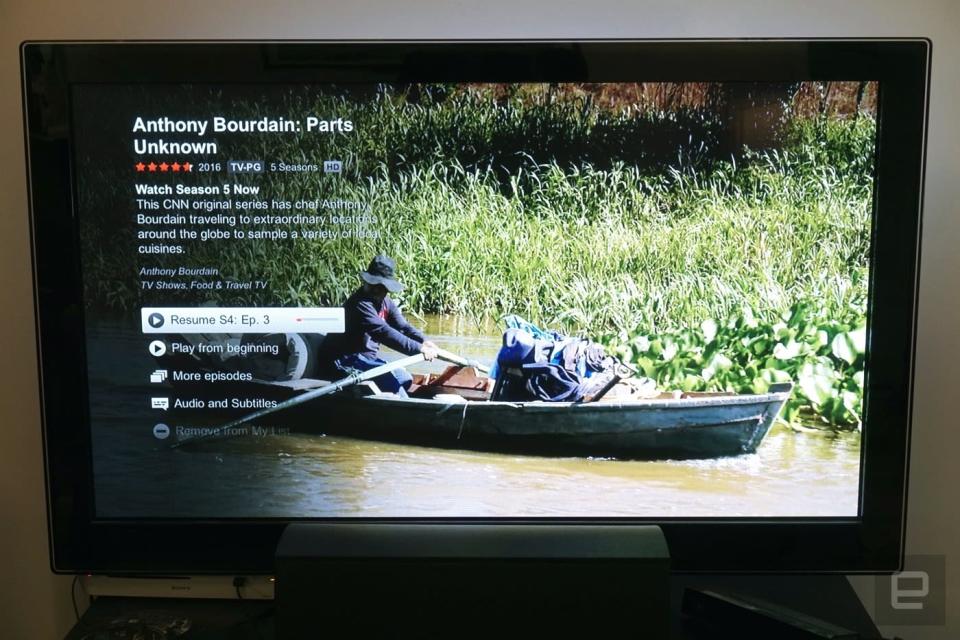
Netflix's Roku app was particularly impressive on the Stick. It starts autoplaying videos as soon as you navigate to a title's page, and there's also the occasional trailer or preview on the Netflix home screen. Despite having to handle constant streaming of high-quality video, the Roku Stick never broke a sweat. Chalk that up to both its faster CPU and refined networking capabilities. It was a huge surprise to see a much more complex Netflix app running flawlessly on a $50 device, whereas I still occasionally have slowdown problems with its Apple TV app.
While I never had any issue with the old remotes, the streamlined model felt even better in my hand. I also had no trouble connecting my wired and wireless headphones with Roku's iPhone app for the private-listening feature. I kept a close eye out for audio-synchronization issues and didn't notice any problems with dialogue or instruments falling out of step during Amazon's Mozart in the Jungle.
As always, Roku's search does a good job of telling you where to rent and buy content. You can also follow titles from the search results, as well as dig into profiles from the directors and cast members. I found the search to be even more useful on Roku's apps, which is the only way to use voice search with the Stick. It's a lot easier to sift through search results on a phone or tablet screen than it is to type letters individually with your remote. Roku's feed feature, which lets you follow movies, TV shows, actors and directors, worked well from my testing, and it could be particularly useful if you have trouble keeping up with new streaming content.
I used the Roku stick on multiple TVs, as well as my AV receiver, over the course of a week. Every time I plugged it into a new device, it booted up in 15 to 30 seconds and went straight to the home screen. It never had any trouble connecting to my WiFi network, and it seemed to suffer no issues with my constant plugging and unplugging.
The competition
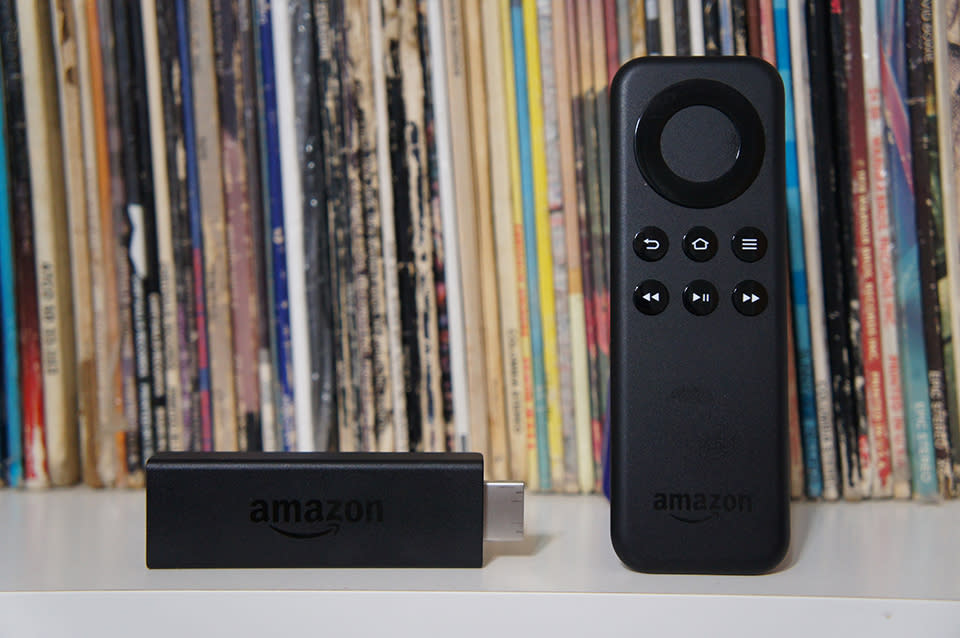
As you'd expect, Roku's main competitor is Amazon's Fire TV stick ($40 with a standard remote, $50 with a voice remote), which up until now was the fastest streaming stick on the market. Roku's new quad-core CPU simply trounces the dual-core chip in the Fire TV offering, which never felt quite as speedy as Amazon's set-top boxes. And, of course, it's worth remembering that Amazon's Fire TV devices have a far more limited selection of apps compared with Roku.
If you have an older TV without an HDMI port, then the $50 Roku 1 might be a better option for you. It won't work with Roku's voice search, but it's the best way to revamp an older TV. And if you absolutely need 4K, the $130 Roku 4 is your best choice.
Wrap-up

The more I used the Roku Streaming Stick, the more it seemed like the ideal streaming solution for most people. Aside from its lack of 4K, it's cheap, easy to set up and incredibly versatile. Even if you already have some sort of streaming box, it might be worth getting one for additional TVs or for when you're traveling.
And if you don't need the Roku Stick, it's still worth seeing in person. It's a tiny reminder of how far we've come.












